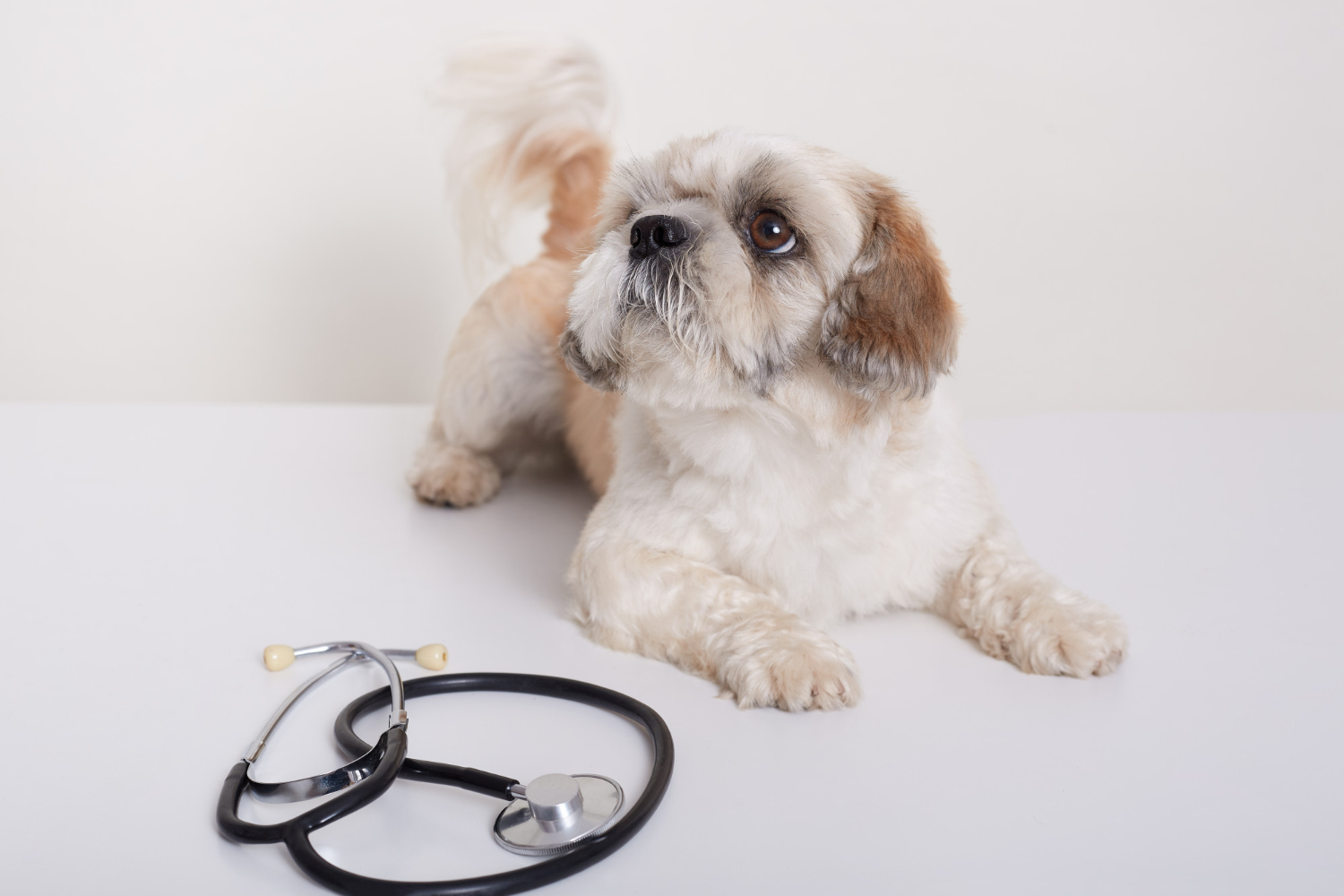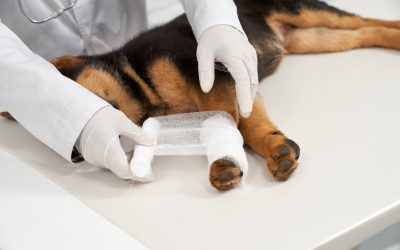Dog Warts [Cause, Types & Removal]

Updated October 12, 2025
What Are Dog Warts and How Do They Look?
If you’ve noticed a strange bump on your dog’s paw pad (or elsewhere), you might be dealing with something called a dog wart. Also known as viral papillomas, these are generally harmless growths caused by the canine papillomavirus (CPV). While the word “virus” can sound scary, the good news is that these warts are usually benign and often clear up on their own.
Dog warts can show up in a few different ways:
- Raised Bumps: Small, round, pinkish or flesh-colored bumps on the paw pads or between the toes.
- Cauliflower-Like Growths: Over time, warts may become larger, uneven, and take on a rough texture similar to cauliflower.
- Clusters: Sometimes, multiple warts can appear together in small groups, creating a patch of growth.
A Closer Look at the Canine Papillomavirus (CPV)
CPV is the primary cause of these warts and spreads easily through direct contact with infected dogs or contaminated surfaces like food bowls, grooming tools, or even the ground at dog parks.
Warm, moist environments are especially inviting for this virus, which is why places where dogs gather can increase the risk. Puppies and dogs with weaker immune systems are more prone to developing warts.
It’s reassuring to know that CPV is species-specific, meaning it stays within dogs and cannot be transmitted to humans or other pets like cats. However, it’s still wise to practice good hygiene by cleaning your dog’s bedding, toys, and living areas regularly.
Types of Warts on Dogs
While the canine papillomavirus causes all dog warts, there are several distinct types that can affect different areas of your dog’s body. Here’s a quick guide to help you identify them:
- Paw Pad Warts: Often found between toes or directly on the pads. They might make walking a bit uncomfortable if they grow large.
- Oral Warts: These appear inside the mouth, on the tongue, gums, or inner cheeks. While they’re usually painless, they can occasionally make eating a bit tricky.
- Skin Warts: Found on the face, legs, or other parts of the body. They often start as small bumps and may get bigger over time.
- Mucosal Warts: Located on moist areas like around the eyes, nose, or genital regions, these can be more bothersome and might need a vet’s attention sooner.
How to Treat Warts on Your Dog’s Paw Pads
Warts often clear up without intervention, especially in young dogs as their immune systems mature. But here are some options to consider if you notice warts sticking around or causing discomfort:
As stated by veterinarian Jennifer Coates, DVM, in the PetMD article:
There are times when veterinary treatment is necessary:
- “Sometimes dog warts are so numerous, significant, or located in places that result in secondary symptoms like lameness, difficulty eating or drinking, or eye irritation.
- Warts may bleed or become infected with bacteria.
- In rare cases, warts that fail to resolve on their own can turn into cancerous tumors. In general, warts that are present for more than three to five months should be treated.
- Dogs who are taking immunosuppressive medications or have other serious health conditions may be unable to get rid of warts without help.
- If just a single or small number of warts is of concern, surgical removal is the treatment of choice. This can be done with a scalpel, laser, or through cryosurgery (using intense cold to destroy the wart). ”
Simple Ways to Help Prevent Warts on Your Dog’s Paws
While there’s no guaranteed way to stop warts from developing, these habits can lower the risk:
- Maintain Clean Spaces: Regularly wash your dog’s bedding, bowls, and toys, and disinfect grooming tools.
- Limit Contact with Infected Dogs: If you know another dog has warts, it’s best to keep them apart until the warts heal.
- Support a Strong Immune System: Provide your dog with a balanced diet, regular exercise, and discuss supplements with your vet to help maintain a robust immune system.
When It’s Time to Call Your Veterinarian
Most warts aren’t urgent, but there are times when you should get professional help:
- If warts are large, bleeding, or causing pain.
- If they’re located in sensitive areas, such as near the eyes, nose, or genitals.
- If your dog has a weakened immune system, such as those undergoing chemotherapy or living with autoimmune diseases.
- If the warts keep coming back or spreading.
A Note About Over-the-Counter Wart Treatments
Many products designed for humans can be too harsh for dogs and may cause more harm than good. Always check with your vet before trying any over-the-counter solutions. They can recommend gentle, pet-safe options and show you how to apply them correctly to keep your pup comfortable.
Some vet-approved approaches might include:
- Thuja Occidentalis (Cedar Leaf): A natural remedy thought to have antiviral properties.
- Mild Salicylic Acid: Helps exfoliate the wart, but must be used very carefully.
- At-Home Cryotherapy Kits: Available in some cases, with your vet’s guidance.
Pet Insurance Can Ease the Financial Burden of Treating Warts on Dogs
When your pet suffers from an illness, it’s essential to take them to the vet to receive the proper care without worrying about the financial implications. When you have Odie Pet Insurance, you don’t have to worry about unexpected bills caused by pet care.
Learn more about Odie’s Illness & Injury Plan.
FAQs
What are dog warts, and what do they look like?
Dog warts (viral papillomas) are benign growths caused by canine papillomavirus (CPV)—the second most common skin tumor in dogs under 1 year. They have a distinctive cauliflower-like appearance with rough, knobbly texture, appearing as pink/flesh-colored bumps that progress to larger grayish/brownish irregular masses. They appear singly or in clusters and are highly contagious among dogs.
How do dogs get warts, and can humans catch them?
Dogs get warts through direct contact with infected dogs or contaminated surfaces (toys, bowls, bedding). The virus enters through damaged skin (abrasions, cuts, insect bites). Warts appear 1-2 months after exposure. Canine papillomavirus is species-specific—humans and other animals CANNOT catch warts from dogs, and dogs can only spread them to other dogs.
Which dogs are most at risk, and where do warts appear?
Puppies and young dogs under 2 years (immature immune systems), immunocompromised dogs, and certain breeds (Cocker Spaniels, Kerry Blue Terriers) are most susceptible. Warts appear in/around the mouth (oral papillomas—most common in puppies), around the eyes/eyelids, between toes, on paw pads, feet, and almost anywhere on the skin.
Do dog warts need treatment, and how long do they take to go away?
Most warts disappear naturally within 1-2 months (up to 6-8 weeks) as immunity develops. Treatment is needed if warts interfere with eating/drinking/walking, become infected/inflamed, persist beyond 3-5 months, are very large/numerous, or cause complications. Options include surgical removal, cryotherapy, electrocautery, crushing, medications (azithromycin, interferon, imiquimod), or monitoring.
What complications can dog warts cause?
Generally painless, but complications include difficulty eating/drinking (mouth warts), lameness (paw warts), eye irritation (eyelid warts), difficulty swallowing/breathing (throat warts), bleeding, bacterial infection, and rarely transformation into cancer if untreated for extended periods. Seek vet care if warts bleed frequently, appear infected, or persist beyond 3-5 months.
How much does wart removal cost, and does insurance cover it?
Removal costs $300-$500 for 1-2 warts with local anesthesia/sedation. Multiple warts requiring general anesthesia can exceed $1,000. Biopsy costs approximately $500; extensive surgery can cost up to $2,500. Some pet insurance plans cover viral infections, including CPV, but may exclude pre-existing conditions or cosmetic procedures. Once recovered, dogs develop immunity to that viral strain, but could get warts from different CPV types.



